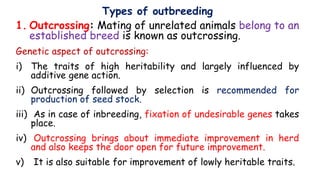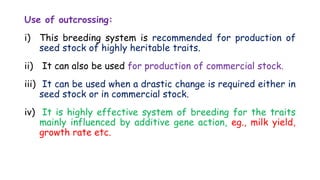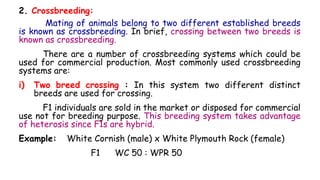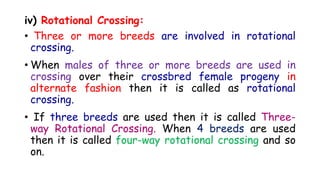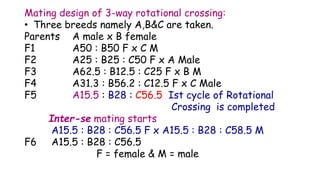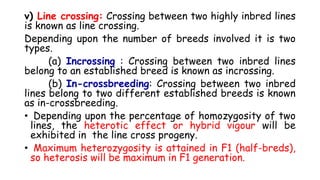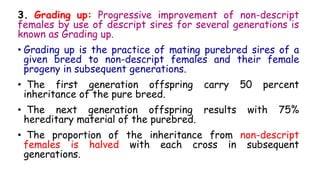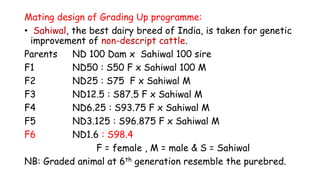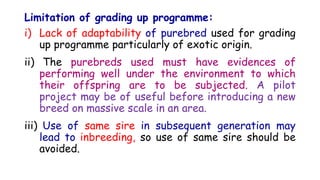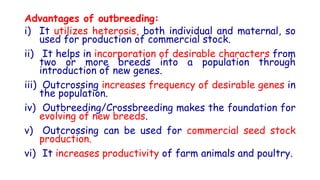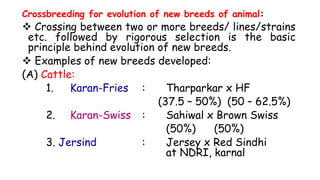This document discusses outbreeding and its classification in animal genetics and breeding. It defines outbreeding as mating animals that are less closely related than the average within a population. There are several types of outbreeding discussed including outcrossing, crossbreeding, grading up, and species hybridization. Crossbreeding involves mating animals from two or more established breeds and has advantages like utilizing heterosis to increase productivity. New breeds have been developed using outbreeding and selection over multiple generations.
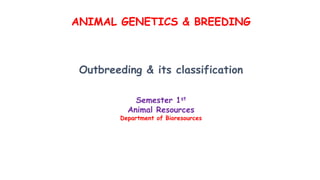
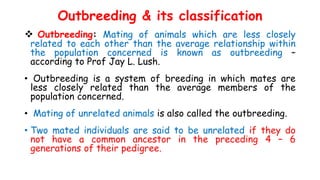

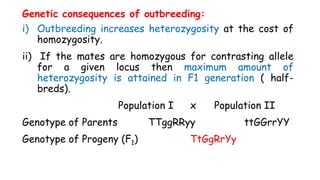
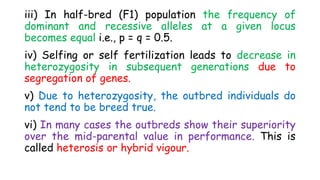
![Heterosis: The average superiority of outbreds over their
mid-parental value (parental average) is called heterosis or
hybrid vigour.
Heterosis is expressed in terms of percentage (%).
Heterosis (%) =
𝑿𝑶 −𝑿𝑷 𝒙 𝟏𝟎𝟎%
𝑿𝑷
Where, XO and XP are the average performance of offspring
and mid-parental value respectively.
Example: Suppose the average litter size at weaning in pig is
7.0 for breed A and 8.0 for breed B. The average litter size
of their F1 (half-bred) is 8.5. The heterosis (%) would be
[{8.5 – (7.0 + 8.0)/2}/7.5]x100 = [(8.5 – 7.5)/7.5]x100
= (1/7.5)x100 = 13.33%.](https://image.slidesharecdn.com/outbreeding-220920171615-f9844e64/85/Outbreeding-pptx-6-320.jpg)
